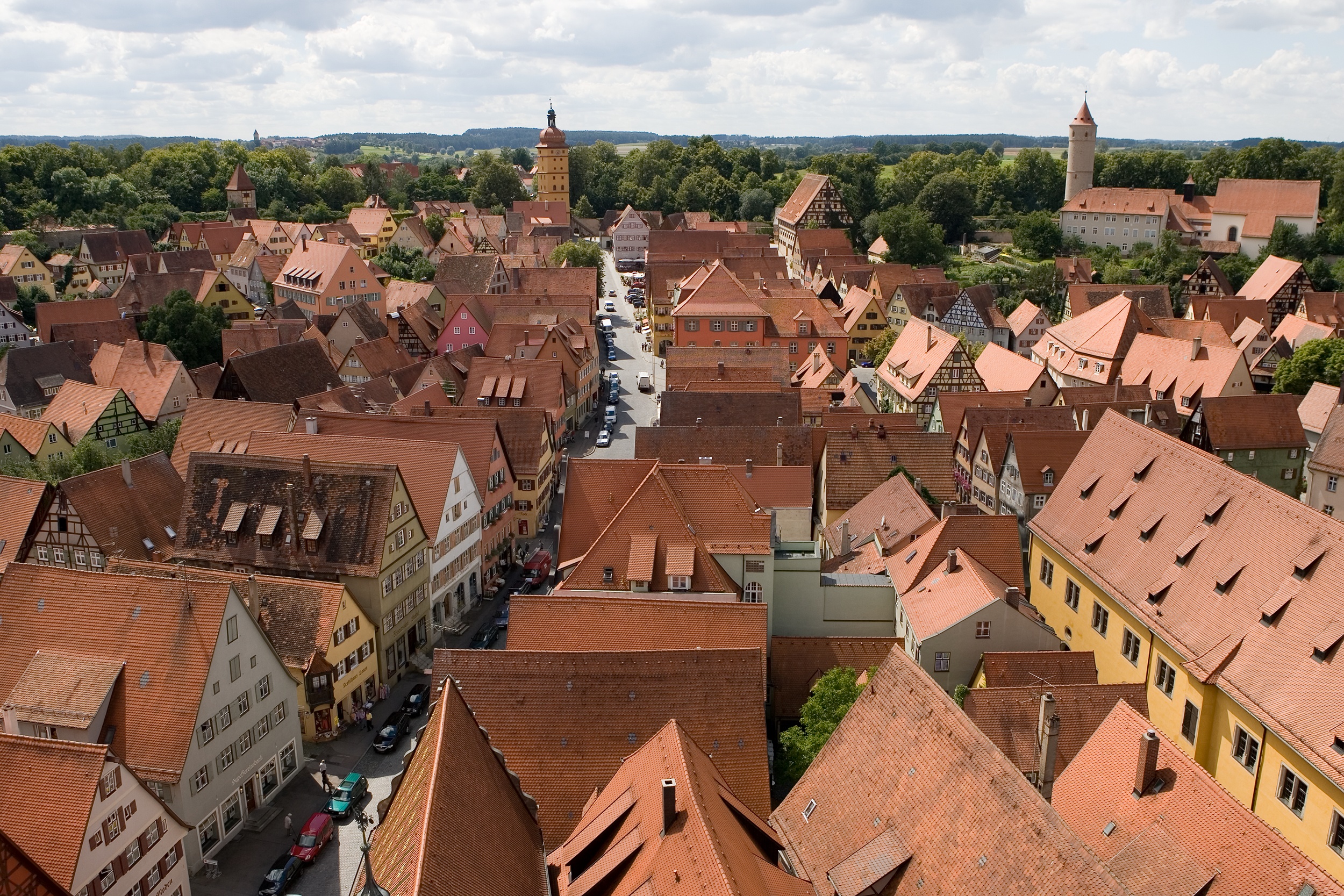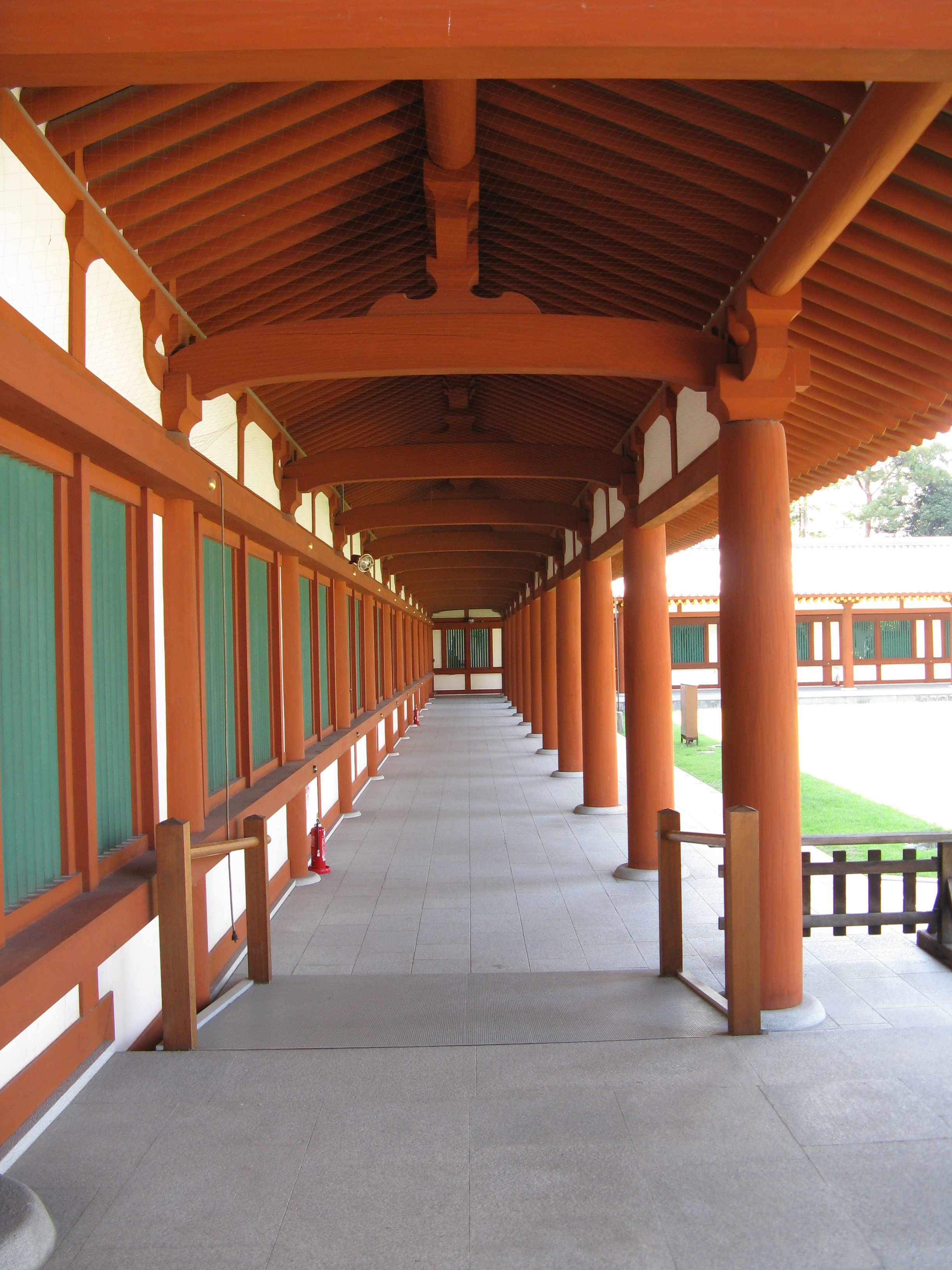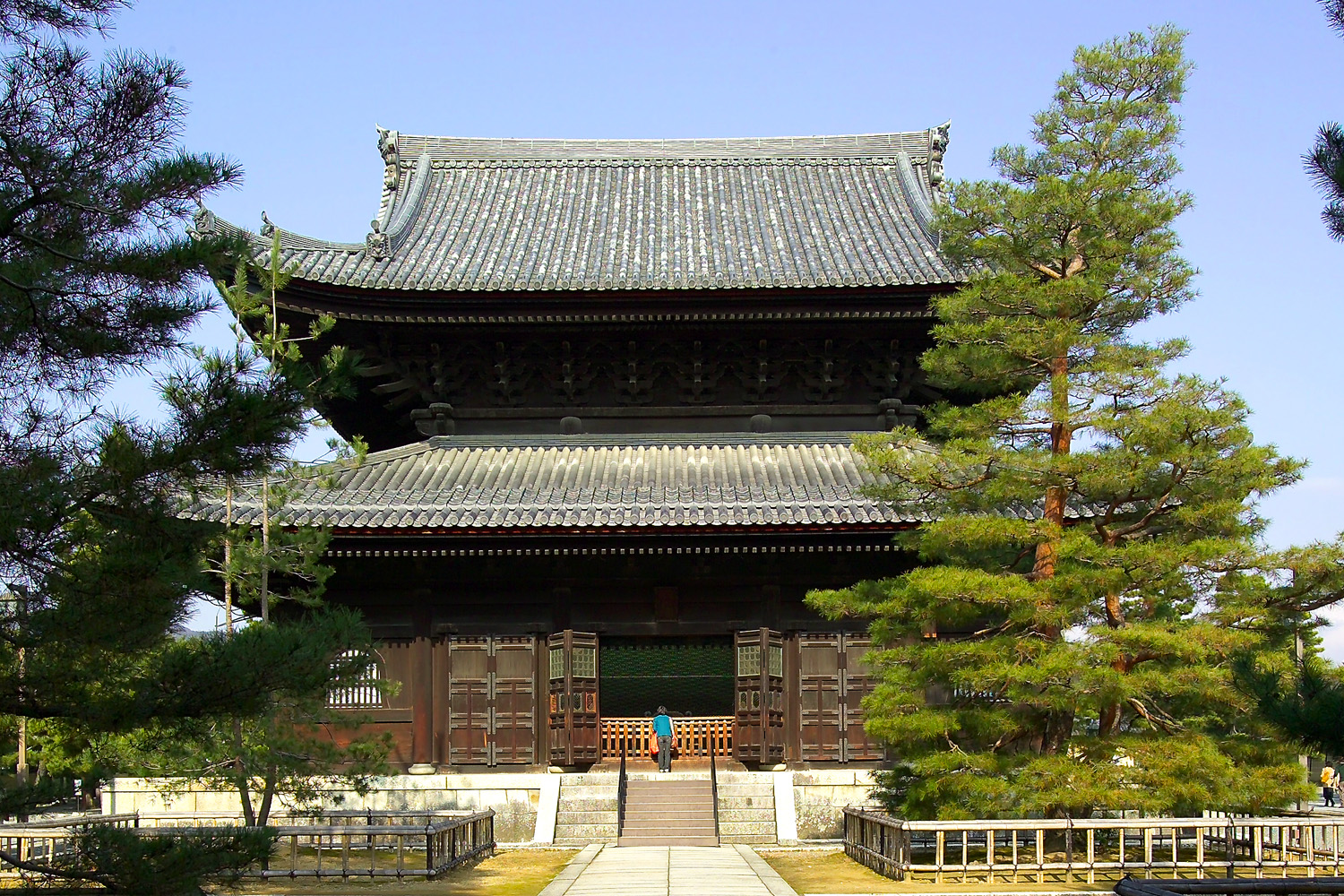|
Kōdo Temple Ruins
The is an archaeological site with the ruins of a late Nara to Heian period Buddhist temple located in the city of Ono, Hyōgo Prefecture, in the Kansai region of Japan. The site was designated a National Historic Site in 1980. Overview Kōdo temple ruins are located on a river terrace in the middle reaches of the Kakogawa River, almost in the center of the Harima region. The temple occupied an enclosed compound approximately 100 meters from east-to-west and 150 meters from north-to-south. The layout appears to have been based on Yakushi-ji in Nara, with twin east and west Pagodas in a courtyard between the Kondō and the Middle Gate, with a Lecture Hall situated behind the Kondō, and with a cloister connecting the Middle Gate with the sides of the Lecture Hall. The pagoda foundations were of rammed earth, with a remaining height of 0.7 meters, measuring ten meters square. The Kondo was a 15 x 12 meter structure, and the Lecture Hall was a 23 x 11.5 meter structure. Artifacts ... [...More Info...] [...Related Items...] OR: [Wikipedia] [Google] [Baidu] |
Ono, Hyōgo
270px, Ono City Hall is a city located in Hyōgo Prefecture, Japan. , the city had an estimated population of 47,609 in 20483 households and a population density of 510 persons per km². The total area of the city is . Geography Ono is located almost in the center of the Harima Plain, on the bank of the Kakogawa River.. Neighbouring municipalities Hyōgo Prefecture * Kakogawa * Kasai * Katō * Miki Climate Ono has a Humid subtropical climate (Köppen ''Cfa'') characterized by warm summers and cool winters with light to no snowfall. The average annual temperature in Ono is 14.7 °C. The average annual rainfall is 1462 mm with September as the wettest month. The temperatures are highest on average in August, at around 26.4 °C, and lowest in January, at around 3.5 °C. Demographics Per Japanese census data, the population of Ono has grown relatively steady over the past 60 years. History The area of the modern city of Ono was within ancient Hari ... [...More Info...] [...Related Items...] OR: [Wikipedia] [Google] [Baidu] |
Harima Province
or Banshū (播州) was a province of Japan in the part of Honshū that is the southwestern part of present-day Hyōgo Prefecture. Harima bordered on Tajima, Tanba, Settsu, Bizen, and Mimasaka Provinces. Its capital was Himeji. During the Edo period of Japanese history, the Akō Domain (fief) was part of Harima. The Forty-seven ''rōnin'' were samurai of Akō han. IHI Corporation, a shipbuilder and major Boeing engine subcontractor gets its name from the province. History Harima Province was established in 7th century. During the Meiji Restoration, Himeji Prefecture was established with the whole area of Harima Province as the territory. Himeji Prefecture was renamed to Shikama prefecture, and Shikama Prefecture was transferred to Hyōgo Prefecture finally. Harima Sake Culture Tourism promotes the region as the "Hometown of Japanese Sake". Temples and shrines '' Iwa jinja'' was the chief Shinto shrine ('' ichinomiya'') of Harima. [...More Info...] [...Related Items...] OR: [Wikipedia] [Google] [Baidu] |
Buddhist Archaeological Sites In Japan
Buddhism, also known as Buddhadharma and Dharmavinaya, is an Indian religion and List of philosophies, philosophical tradition based on Pre-sectarian Buddhism, teachings attributed to the Buddha, a wandering teacher who lived in the 6th or 5th century Before the Common Era, BCE. It is the Major religious groups, world's fourth-largest religion, with about 500 million followers, known as Buddhists, who comprise four percent of the global population. It arose in the eastern Gangetic plain as a movement in the 5th century BCE, and gradually spread throughout much of Asia. Buddhism has subsequently played a major role in Asian culture and spirituality, eventually spreading to Western world, the West in the 20th century. According to tradition, the Buddha instructed his followers in a path of bhavana, development which leads to Enlightenment in Buddhism, awakening and moksha, full liberation from ''Duḥkha, dukkha'' (). He regarded this path as a Middle Way between extremes su ... [...More Info...] [...Related Items...] OR: [Wikipedia] [Google] [Baidu] |
List Of Historic Sites Of Japan (Hyōgo)
This list is of the Monuments of Japan, Historic Sites of Japan located within the Prefectures of Japan, Prefecture of Hyōgo Prefecture, Hyōgo. National Historic Sites As of 1 January 2021, fifty-one Sites have been Cultural Properties of Japan, designated as being of national Values (heritage), significance (including one *List of Special Places of Scenic Beauty, Special Historic Sites and Special Natural Monuments, Special Historic Site). , - Prefectural Historic Sites As of 1 May 2020, ninety-seven Sites have been designated as being of prefectural importance. Municipal Historic Sites As of 1 May 2020, a further two hundred and thirty-eight Sites have been designated as being of municipal importance. See also * Cultural Properties of Japan * Awaji Province, Awaji, Harima Province, Harima, Settsu Province, Settsu, Tajima Province, Tajima, and Tanba Province, Tanba Provinces * List of Places of Scenic Beauty of ... [...More Info...] [...Related Items...] OR: [Wikipedia] [Google] [Baidu] |
Roof Tile
Roof tiles are overlapping tiles designed mainly to keep out precipitation such as rain or snow, and are traditionally made from locally available materials such as clay or slate. Later tiles have been made from materials such as concrete, glass, and plastic. Roof tiles can be affixed by screws or nail (fastener), nails, but in some cases historic designs utilize interlocking systems that are self-supporting. Tiles typically cover an List of commercially available roofing materials, underlayment system, which seals the roof against water intrusion. Categories There are numerous profiles, or patterns, of roof tile, which can be separated into categories based on their installation and design. Shingle / flat tiles One of the simplest designs of roof tile, these are simple overlapping slabs installed in the same manner as traditional roof shingle, shingles, usually held in place by nails or screws at their top. All forms of slate tile fall into this category. When installed, mos ... [...More Info...] [...Related Items...] OR: [Wikipedia] [Google] [Baidu] |
Archaeological Excavation
In archaeology, excavation is the exposure, processing and recording of archaeological remains. An excavation site or "dig" is the area being studied. These locations range from one to several areas at a time during a project and can be conducted over a few weeks to several years. Excavation involves the recovery of several types of data from a site. This data includes Artifact (archaeology), artifacts (portable objects made or modified by humans), Feature (archaeology), features (non-portable modifications to the site itself such as post molds, burials, and hearths), Ecofact, ecofacts (evidence of human activity through organic remains such as animal bones, pollen, or charcoal), and archaeological context (relationships among the other types of data).Kelly&Thomas (2011). ''Archaeology: down to earth'' (4th ed.). Belmont, Calif.: Wadsworth, Cengage Learning. Before excavating, the presence or absence of archaeological remains can often be suggested by, non-intrusive remote se ... [...More Info...] [...Related Items...] OR: [Wikipedia] [Google] [Baidu] |
Kairō
Two examples of ''kairō'' , , is the Japanese version of a cloister, a covered corridor originally built around the most sacred area of a Buddhist temples in Japan, Buddhist temple, a zone which contained the ''Main Hall (Japanese Buddhism), kondō'' and the ''tō''. Nowadays it can be found also at Shinto shrines and at ''shinden-zukuri'' aristocratic residences. The ''kairō'' and the ''rōmon'' were among the most important among the ''garan'' elements which appeared during the Heian period. The first surrounded the holiest part of the ''garan'', while the second was its main exit. Neither was originally characteristic of Shinto shrines, but in time they often came to replace the traditional shrine surrounding fence called ''tamagaki''. The earliest example of a ''kairō''/''rōmon'' complex can be found at Iwashimizu Hachiman-gū, a shrine now but a former .On the subject of shrine-temple complexes, see the article ''Shinbutsu shūgō''. The ''rōmon'' is believed to ha ... [...More Info...] [...Related Items...] OR: [Wikipedia] [Google] [Baidu] |
Main Hall (Japanese Buddhism)
Main hall or Main Temple is the building within a Japanese Buddhist monastery compound ('' garan'') which enshrines the main object of veneration.Kōjien Japanese dictionary Because the various denominations deliberately use different terms, this single English term translates several Japanese words, among them ''butsuden'', ''butsu-dō'', ''kondō'', ''konpon-chūdō'', and ''hondō''. ''Hondō'' is its exact Japanese equivalent, while the others are more specialized words used by particular sects or for edifices having a particular structure. Kondō (Asuka and Nara periods) The term started to be used during the Asuka and Nara periods. A ''kondō'' is the centerpiece of an ancient Buddhist temple's ''garan'' in Japan. The origin of the name is uncertain, but it may derive from the perceived preciousness of its content, or from the fact that the interior was lined with gold. This is the name used by the oldest temples in the country.Iwanami Nihonshi Jiten A ''kondō'', for exa ... [...More Info...] [...Related Items...] OR: [Wikipedia] [Google] [Baidu] |
Japanese Pagoda
Multi-storied pagodas in wood and stone, and a ''gorintō'' Pagodas in Japan are called , sometimes or , and derive historically from the Chinese pagoda, itself an interpretation of the Indian ''stupa''. Like the ''stupa'', pagodas were originally used as reliquaries, but in many cases ended up losing this function. Pagodas are quintessentially Buddhist and an important component of Buddhist temples in Japan, Japanese Buddhist temple compounds but, because until the Shinbutsu bunri, Kami and Buddhas Separation Act of 1868, a Shinto shrine was normally Shinbutsu-shūgō, also a Buddhist temple and vice versa, they are not rare at shrines either. The famous Itsukushima Shrine, for example, has one. After the Meiji Restoration the word ''tō'', once used exclusively in a religious context, came to mean also "tower" in the western sense, as for example in . Of the Japanese pagoda's many forms, some are built in wood and are collectively known as , but most are carved out of ston ... [...More Info...] [...Related Items...] OR: [Wikipedia] [Google] [Baidu] |
Nara, Nara
is the capital city of Nara Prefecture, Japan. , Nara has an estimated population of 367,353 according to World Population Review, making it the largest city in Nara Prefecture and sixth-largest in the Kansai region of Honshu. Nara is a core city located in the northern part of Nara Prefecture bordering the Kyoto Prefecture. Nara was the capital of Japan during the Nara period from 710 to 784 as the seat of the Emperor before the capital was moved to Nagaoka-kyō, except for the years 740 to 745, when the capital was placed in Kuni-kyō, Naniwa-kyō and Shigaraki Palace. Nara is home to eight major historic temples, shrines, and heritage sites, specifically Tōdai-ji, Saidai-ji, Kōfuku-ji, Kasuga Shrine, Gangō-ji, Yakushi-ji, Tōshōdai-ji, and the Heijō Palace, together with Kasugayama Primeval Forest, collectively form the Historic Monuments of Ancient Nara, a UNESCO World Heritage Site. Etymology By the Heian period, a variety of different characters had ... [...More Info...] [...Related Items...] OR: [Wikipedia] [Google] [Baidu] |
Yakushi-ji
is one of the most famous imperial and ancient Buddhist temples in Japan, and was once one of the Seven Great Temples of Nanto, located in Nara. The temple is the headquarters of the Hossō school of Japanese Buddhism. Yakushi-ji is one of the sites that are collectively inscribed as a UNESCO World Heritage Site under the name of "Historic Monuments of Ancient Nara." The temple's main object of veneration, Yakushi Nyorai, also known as "The Medicine Buddha", was one of the first Buddhist Deities to arrive in Japan from China in 680, and gives the temple its name. History The Jinshin Wars in Japan in 672 resulted in moving the capital from Otsu back to Asuka. The movement of the capital was due to family disputes over money and power leading to civil war between Prince Naka and Prince Ōama. Prince Ōama desired power over Prince Naka's son, who was favored by his father to take the throne after him. After disagreements between Prince Ōama and Prince Naka's son, Prince Ōtomo ... [...More Info...] [...Related Items...] OR: [Wikipedia] [Google] [Baidu] |
Kako River
The Kako River is a river in the Cuyuni-Mazaruni region of Guyana and one of the largest tributaries of the Mazaruni River. 'Kako' is the Akawaio word for jasper which is found in the river. Mining Mining is prevalent throughout Guyana's waterways; there are about 144 mining claims and concessions allocated on the Kako River and its tributaries. Gold mining, done by dredging, pollutes waterways and in 2012, a series of conflicts arose between miners and Amerindians who rely on the water from the Kako River. After a third attempt was made to mine the area, an ex-parte injunction was brought against Toshao Mario Hastings. Amerindian groups defended Hastings, pointing out that the government is denying the people protection of their own land. The people of the surrounding village fear the Kako River to become polluted like the Mazaruni River. In March 2013, the United Nations Committee on International Convention on the Elimination of All Forms of Racial Discrimination expresse ... [...More Info...] [...Related Items...] OR: [Wikipedia] [Google] [Baidu] |









